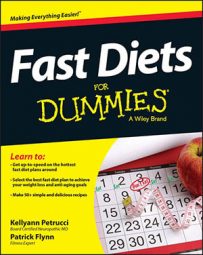You want to select certain types of exercise that give you the best results when you're micro-fasting. Some are better than others. A combination of sprinting and heavy lifting (along with micro-fasting) can give you the results you want.
For example, aim for 10 to 15 minutes of sprints combined with 15 to 20 minutes of heavy lifting, with a focus on the big compound movements such as squats, dead lifts, and pull-ups followed by 20 to 30 minutes of brisk walking to get the most out of your fasting periods.
Make sure you never begin an intense exercise program without your doctor's approval and a proper understanding of good form and exercise technique. Loading weight onto poor form is an impending disaster. It isn't a matter of if something is going to go wrong, but when.
Sprinting
One of the best forms of intense exercise for blasting fat and building muscle is sprinting. When in a pinch, running 15 to 20 minutes of sprints at the end of your fast is a great way to get in your intense exercise for the day.
And no need to overcomplicate the matter, either. When it comes to sprinting, pick a distance that provides a good challenge but also allows you to be successful; you don't want the distance to be so long that your sprint turns into a jog. Be sure to rest as long as you need between sets of sprints until you feel fresh enough to do it again.
Although this advice of taking your time may at first seem like a bit of a contradiction when it comes to sprinting, it's not. Sprinting is about expressing power, grace, and control. If you try to do too much too quickly, you'll express none of those things.
For example, sprint 50 meters, rest for one minute, sprint 100 meters, rest for two minutes, sprint 50 meters, rest for one minute, and so on for the total 15 to 20 minutes.
Sprinting involves super high-velocity muscular contractions, meaning that you had better be properly warmed up before you start sprinting. To warm up, always take the time to prep the body for the rigors of intense exercise with stretching, light movement, and a few warm-up sets of whatever you happen to be doing that day.
With sprinting, warm up with a few sets of strides — which is a run that is somewhere between the intensity of a jog and a sprint.
Take at least 5 to 10 minutes to perform some light strides as well as another 5 to 10 minutes to perform some general stretching (such as a standing toe touch, performed with locked knees and a flat back) and foam rolling (which is a piece of equipment used to create supple muscle tissue).
Lifting heavy
Lifting heavy items is another important aspect of exercise when micro-fasting. Strength, loosely speaking, is the ability to generate tension in your muscles (which is what makes them contract). The only true way to increase strength is to increase tension in the muscles, and the only way to increase tension in the muscles is to lift more weight, lift the same weight with more speed, or a combination of the two.
As a result, in order for exercise to be intense enough to elicit muscular growth and rejuvenation, it needs to involve either a form of heavy strength training (heavy lifting), power training (fast lifting), or a combination of the two. Moderate-intensity aerobic activity, on the other hand, doesn’t produce this effect, because it lacks the appropriate amount of intensity.
You must not be afraid to lift heavy things. You do want to get the most out of your fasting and exercise program, right? Heavy is a relative term. What might be heavy for you, might not be heavy for someone else, and might not be heavy to a power lifter. As a general rule, if you can lift something for more than five to eight repetitions, then it's not heavy.
Although low-intensity aerobic activity, such as brisk walking, is very good for you and can help to boost many of the positive effects of fasting, research has shown that prolonged bouts of moderate-intensity aerobic activity, such as excessive amounts of jogging or cycling, may do more harm than good due to chronically elevated cortisol (that's your stress hormone), inflammation, and oxidative damage to cells.
Keep your aerobic work lower intensity (walking and hiking), or if you really enjoy moderate-intensity aerobic activity, just be sure not to overdo it (30 to 40 minutes, two to three days per week is more than enough in most cases).

